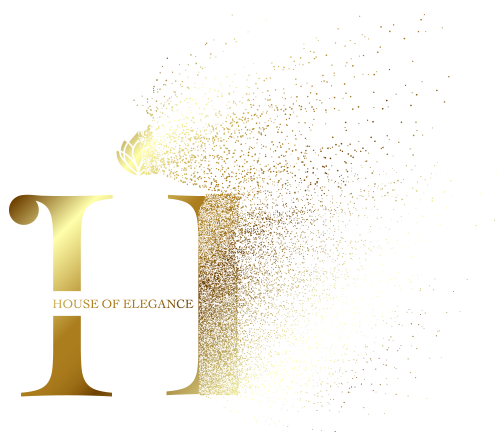Business, Business, Business, Business, Business, Business, Business, Business, Business, Business, Business, Business, Business, Business, Business, Business, Business, Business, Business, Business, Business, Business, Business, Business, Business, Business, Business, Business, Business, Business, Business, Business, Business, Business, Business, Business, Business, Business, Business, Business, Business, Business, Business, Business, Business, Business, Business, Business, Business, Business, Business, Business, Business, Business, Business, Business, Business, Business, Business, Business, Business, Business, Business, Business, Business, Business, Business, Business, Business, Business, Business, Business, Business, Business, Business, Business, Business, Business, Business, Business, Business, Business, Business, Business, Business, Business, Business, Business, Business, Business, Business, Business, Business, Business, Business, Business, Business, Business, Business, Business, Business, Business, Business, Business, Business, Business, Business, Business, Business, Business, Business, Business, Business, Business, Business, Business, Business, Business, Business, Business, Business, Business, Business, Business, Business, Business, Business, Business, Business, Business, Business, Business, Business, Business, Business, Business, Business, Business, Business, Business, Business, Business, Business, Business, Business, Business, Business, Business, Business, Business, Business, Business, Business, Business, Business, Business, Business, Business, Business, Business, Business, Business, Business, Business, Business, Business, Business, Business, Business, Business, Business, Business, Business, Business, Business, Business, Business, Business, Business, Business, Business, Business, Business, Business, Business, Business, Business, Business, Business, Business, Business, Business, Business, Business, Business, Business, Business, Business, Business, Business, Business, Business, Business, Business, Business, Business, Business, Business, Business, Business, Business, Business, Business, Business, Business, Business, Business, Business, Business, Business, Business, Business, Business, Business, Business, Business, Business, Business, Business, Business, Business, Business, business, Business, Business, Business, Business, Business, Business, Business, Business, Business, Business, Business, Business, Business, Business, Business, Business, Business, Business, Business, Business, Business, Business, Business, Business, Business, Business, Business, Business, Business, Business, Business, Business, Business, Business, Business, Business, Business, Business, Business, Business, Business, Business, Business, Business, Business, Business, Business, Business, Business, Business, Business, Business, Business, Business, Business, Business, Business, Business, Business, Business, Business, Business, Business, Business, Business, Business, Business, Business, Business, Business, Business, Business, Business, Business, Business, Business, Business, Business, Business, Business, Business, Business, Business, Business, Business, Business, Business, Business, Business, Business, Business, Business, Business, Business, Business, Business, Business, Business, Business, Business, Business, Business, Business, Business, Business, Business, Business, Business, Business, Business, Business, Business, Business, Business, Business, Business, Business, Business, Business, Business, Business, Business, Business, Business, Business, Business, Business, Business, Business, Business, Business, Business, Business, Advertising, Business, Advertising, Business, Advertising, Business, Advertising, Business, Advertising, Business, Advertising, Business, Advertising, Business, Advertising, Business, Advertising, Business, Advertising, Business, Article Marketing, Business, Article Marketing, Business, Article Marketing, Business, Article Marketing, Business, Article Marketing, Business, Article Marketing, Business, Article Marketing, Business, Article Marketing, Business, Article Marketing, Business, Careers, Business, Careers, Business, Careers, Business, Customer Service, Business, Customer Service, Business, Customer Service, Business, Customer Service, Business, Customer Service, Business, Customer Service, Business, Customer Service, Business, Customer Service, Business, Customer Service, Business, Customer Service, Business, Customer Service, Business, Entrepreneurs, Business, Entrepreneurs, Business, Entrepreneurs, Business, Entrepreneurs, Business, Entrepreneurs, Business, Home Based Business, Business, Home Based Business, Business, Home Based Business, Business, Home Based Business, Business, Home Based Business, Business, Home Based Business, Business, Home Based Business, Business, Home Based Business, Business, Home Based Business, Business, Marketing, Business, Marketing, Business, Marketing, Business, Marketing, Business, Marketing, Business, Marketing, Business, Marketing, Business, Marketing, Business, Marketing, Business, Marketing, Business, Marketing, Business, Marketing, Business, Marketing, Business, Marketing, Business, Marketing, Business, Marketing, Business, Marketing, Business, Marketing, Business, Marketing, Business, Sales, Business, Sales, Business, Sales, Business, Sales, Business, Sales, Business, Sales, Business, Sales, Business, Sales, Business, Sales, Business, Small Business, Business, Small Business, Business, Small Business, Business, Small Business, Business, Small Business, Business, Small Business, Internet Business, Affiliate Programs, Internet Business, Audio-Video Streaming, Internet Business, Audio-Video Streaming, Internet Business, Blogging, Internet Business, Blogging, Internet Business, Blogging, Internet Business, Blogging, Internet Business, Domains, Internet Business, Ebooks, Internet Business, Ebooks, Internet Business, Ecommerce, Internet Business, Ecommerce, Internet Business, Ecommerce, Internet Business, Ecommerce, Internet Business, Email Marketing, Internet Business, Email Marketing, Internet Business, Internet Marketing, Internet Business, Internet Marketing, Internet Business, Internet Marketing, Internet Business, Internet Marketing, Internet Business, Podcasts, Internet Business, Podcasts, Internet Business, Security, Internet Business, Security, Internet Business, Security, Internet Business, Security, Internet Business, Security, Internet Business, SEO, Internet Business, SEO, Internet Business, SEO, Internet Business, SEO, Internet Business, Site Promotion, Internet Business, Site Promotion, Internet Business, Web Design, Internet Business, Web Design, Page, Internet, Business, Marketing, Life, Other, Company, People, Computers, Public, Worldwide, Shop, Blog, Writer, AI, Tehnologies, Computers, Finance, Page, Internet, Business, Marketing, Life, Other, Company, People, Computers, Public, Worldwide, Shop, Blog, Writer, AI, Tehnologies, Computers, Finance
Why Duplicate Designer Clothes Are Gaining Popularity
From the runways of Paris to the streets of New York, designer labels have held a sure cachet, symbolizing luxurious, sophistication, and status. However, in recent times, there has been a notable shift in consumer habits, with duplicate designer clothes steadily gaining standardity. This phenomenon raises intriguing questions about the evolving nature of fashion, consumer preferences, and the broader cultural landscape.
Replica designer clothes, also known as “dupes” or “knockoffs,” are garments that carefully mimic the designs of high-finish fashion houses however are sold at a fraction of the unique price. While the production and sale of reproduction items elevate ethical and legal considerations regarding intellectual property rights, their enchantment to consumers cannot be ignored. A number of factors contribute to the growing demand for duplicate designer clothes.
One significant factor driving the popularity of replica designer clothes is affordability. Authentic designer clothing often comes with exorbitant worth tags, placing them out of reach for a lot of consumers. In distinction, replicas supply an accessible various, allowing individuals to emulate the fashion of their favorite designers without breaking the bank. In in the present day’s financial system, where value-consciousness is more and more prevalent, the attract of acquiring designer-inspired looks at a more affordable value point is undeniable.
Moreover, duplicate designer clothes cater to the desire for selection and trendiness. Fashion trends evolve quickly, and keeping up with the latest types may be financially daunting when dealing with authentic designer pieces. Replicas provide consumers the flexibility to experiment with completely different trends and styles without committing to significant investments. This accessibility to trends allows individuals to express their personal fashion and keep present without draining their bank accounts.
The rise of social media and influencer tradition has additionally performed a pivotal function in popularizing replica designer clothes. Platforms like Instagram, TikTok, and YouTube have become breeding grounds for fashion inspiration, with influencers showcasing their outfits and sharing styling ideas with millions of followers. As influencers flaunt their impeccably styled duplicate items, they contribute to normalizing their use and elevating their status as desirable fashion choices.
Additionally, the democratization of fashion via online marketplaces has made duplicate designer clothes more accessible than ever before. E-commerce platforms offer a vast array of replica items, permitting consumers worldwide to browse, evaluate, and purchase with ease. With just a couple of clicks, shoppers can peruse a plethora of replica designs, making fashion more inclusive and attainable for individuals regardless of their geographic location.
Furthermore, the improving quality of reproduction designer clothes has contributed to their burgeoning in styleity. While replicas have been as soon as synonymous with poor craftsmanship and inferior materials, advancements in manufacturing strategies have led to higher-quality replicas that intently resemble their authentic counterparts. Right now, many reproduction garments boast impressive attention to element, using premium materials and meticulous craftsmanship to copy the look and really feel of designer originals.
Despite their growing popularity, reproduction designer clothes proceed to face criticism and controversy. Critics argue that the proliferation of replicas undermines the integrity of the fashion business, perpetuates counterfeit culture, and harms legitimate designers and brands. Moreover, the ethical implications of replicating designs without proper authorization increase considerations relating to intellectual property rights and fair labor practices within the fashion provide chain.
In conclusion, the rising widespreadity of replica designer clothes reflects a shifting paradigm within the fashion landscape. Affordability, accessibility, selection, and improving quality are key drivers behind the growing demand for duplicate items. While their ascent may provoke ethical and legal debates, replica designer clothes have undoubtedly democratized fashion, empowering individuals to express their style and embrace trends without monetary constraints. As consumer preferences continue to evolve, the allure of duplicate designer clothes is poised to endure, reshaping the way we perceive and consume fashion in the digital age.

